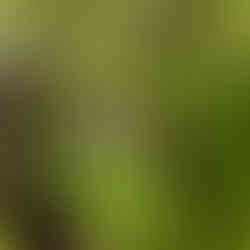Native Species Recs: Dry to Moist Meadows and Woodland Edges
- earthsangha
- Apr 28
- 4 min read
Here’s the next installment in our series of posts giving advice on easy-to-grow, high-value native species. This time around we’re focusing on dry to moist meadows and woodland edges! (If you missed my last email on moist to wet meadows and woodland edges, have no fear! You can read it here: https://www.earthsangha.org/single-post/native-species-recommendations-moist-to-wet-meadows-woodland-edges )
High Value Generalist Plants for Every Garden:
Full Sun to Part Shade, Dry to Moist
Graminoids (grasses, sedges, and rushes):
Andropogon virginicus (Broomsedge) – emerges when soils warm up, somewhat shade tolerant.
Coleataenia anceps – (Beaked Panic Grass)– A robust grass of moist to wet meadows and dry, rugged meadows and along forest edges. Forms short rhizomes.
Dichanthelium clandestinum – (Deertongue Grass)– Various moist to wet forest and forest edges and associated meadows. Common in disturbed areas, ditches, and into upland meadows.
Elymus glabriflorus (Southeastern Wildrye) – Mesic to dry forest edges and into meadows. Emerges earlier than the others here.
Eragrostis spectabilis (Purple Lovegrass) – our shortest common meadow grass. The seed heads can detach and roll around, so if that’s a concern they can be gently raked out in the late fall.
Schizachyrium scoparium (Little Bluestem) – very similar in appearance to Broomsedge, often dry meadows contain stands of both. In our experience, somewhat less shade tolerant than Broomsedge.
Sorghastrum nutans (Indian grass) – tall with showy glaucous (blue-ish cast) leaves and culms and showy coppery seeds. Seems to establish readily in new meadows.
Tridens flavus (Purpletop grass) – tolerates a lot of disturbance, you can see populations in median strips. Generally happiest in drier or well-drained sites but will pop up in wetter meadows too.
Forbs (Wildflowers):
Asclepias syriaca (Common Milkweed) – Common in robust stands through most dry to mesic meadows, and forest edges. Our pick as the most prolific and frequent host to Monarch Butterflies locally.
Asclepias viridiflora (Green Milkweed): Dry meadows and open slopes. Once common but now less so locally.
Baptisia tinctoria (Yellow Wild Indigo): Dry meadows and forests, especially in loose well-drained soils. Our most common Baptisia species by far.
Chrysopsis mariana (Maryland Goldenaster): Common in dry meadows and in acidic, open woodlands under pine or oak canopy. Picture below left.
Clinopodium vulgare (Wild Basil): Widespread in various meadows and successional habitats ranging from dry to wet, especially in disturbed areas. Less frequently in mesic to dry forests. Picture below center.
Coreopsis tripteris (Tall Coreopsis): Variety of habitats in both wet and dry conditions in woodland edges and meadows. Especially happy in areas that seasonally get wet and then dry out.
Coreopsis verticillata (Threadleaf Coreopsis): Dry, open, and acidic woodlands and into meadows and other openings.
Eupatorium hyssopifolium (Hyssop-leaved Boneset): Dry meadows and forest edges.
Eupatorium pubescens (Hairy Thoroughwort): Dry forests, forest edges, and into meadows.
Eupatorium rotundifolium (Roundleaf Thoroughwort ): Wet to moist forest edges and meadows. Occasionally into mesic and dry-mesic meadows and clearings. Picture below right.
Liatris pilosa (Grass-leaved Blazing Star): Dry forest edges and into dry meadows.
Liatris squarrosa (Scaly Blazing Star): Dry meadows and dry forest edges. Common in the Piedmont and Triassic Basin areas in our region but rare or potentially absent in the Coastal Plain. Pictured below left.
Monarda fistulosa (Wild Bergamot): found in dry to mesic forest edges and into meadows.
Monarda punctata (Spotted Beebalm): prefers dry well-drained soils and is the least rhizomatous of the Monardas.
Oenothera fruticosa (Sundrops): Common in mesic to dry meadows, clearings, disturbed areas, and into dry forest edges. Pictured below right.
Packera anonyma (Small's Ragwort): A colony-forming forb of dry woodlands, edges, and into meadows.
Penstemon hirsutus (Hairy Beardtongue): Dry forest edges and into dry meadows. Pictured below center.
Pycnanthemum spp. – The Mountain Mints: Mountain mints are common constituents of most meadows and woodland edges in our region. P. tenuifolium is far and away the most common and can inhabit a wide range of wet to dry meadows and forest edges. The more erect P. muticum prefers moist to mesic areas. The shorter P. incanum specializes in dry habitats. Pictured below.
Rudbeckia spp. – The “Coneflowers”: The ubiquitous and well-known R. hirta, the black-eyed susan, is well known to gardeners and a constant presence in meadows and clearings in our region. Somewhat confusingly, other members of this genus are sometimes referred to as coneflowers, but they are not Echinaceae – an introduction from the Midwest that is not locally native. R. fulgida is another common dry to mesic meadow constituent but is uncommon in the Coastal Plains. Pictured below.

Sericocarpus asteroides (Toothed Whitetop Aster): Dry meadows, forest edges, and into dry to dry-mesic forest interiors.
Sericocarpus linifolius (Narrowleaf Whitetop Aster): Similar to S. asteroides; dry forest edges and into meadows.
Silphium asteriscus (Whorled Rosin Weed); Dry to dry-mesic meadows and forest edges, especially on rocky substrates, and down into disturbed habitat and occasionally in ditches.
Solidago spp. – The Goldenrods: You would be hard-pressed to find a meadow in our region that doesn’t have a lot of goldenrod in it. In dry to mesic meadows, S. nemoralis and S. juncea may proliferate. S. odora, with it’s strong anise scent, is rare and needs well-drained, often sandy or rocky soils to thrive. Not all goldenrods need full sun. S. erecta and S. bicolor do well on dry woodland edges. S. rugosa is common along mesic to wet forest edges, and S. caesia is common in mesic to dry forest interiors.
Symphyotrichum ericoides (White Heath Aster): dry meadows and forest edges.
Symphyotrichum dumosum/pilosum/lateriflorum – these can be tricky to identify down to species, but some late-flowering white aster is a common constituent and useful to late season pollinators. Pictured below right.
Symphyotrichum patens (Late Purple Aster): Open dry woodlands, forest edges, and into dry meadows. Pictured below center.
Symphyotrichum undulatum (Wavy-leaved Aster): Dry to dry-mesic forests and forest edges.
Trichostema dichotomum (Forked Blue Curls): An annual of dry meadows, edges of dry forests and woodlands and other open, dry habitats. Pictured below left.
Vernonia glauca (Broadleaf Ironweed): Dry to dry-mesic forest and forest edges and into dry meadows.
Trees and Shrubs
Rhus spp. (Sumacs) – Staghorn (R. typhina) and Smooth Sumacs (R. glabra) will grow quickly and colonize and area. The fruit are valuable to various birds and the open structure will still allow you to garden around them.
Shrubby St. John’s Wort (Hypericum prolificum) does well on dry meadows and meadow-forest ecotones. Pictured below.















































Great read! love how your post brings attention to nature’s textures and transitions. It got me thinking about the bold design of the NOCTA x Venezia FC 25/26 Pre-Match II Jersey, which channels the rugged, weathered palette of Venice: rust tones, worn façades and layered depth. A stylish nod to both environment and aesthetic.
This is a well-written article about managing e-waste. I had old printers in storage for years, and finally found a reliable Printer Scrap Buyer in UAE. They picked them up from my office and even paid me on the spot. It was convenient and environmentally friendly — highly recommended!
Imagine having a stunning and intelligent partner by your side for any occasion in Delhi. That level of bespoke service is readily available. An call girls near me offers not just beauty, but also wit and charm, making them the ideal companion for social engagements or intimate evenings, always prioritizing your enjoyment and comfort.
I found this page on the Sincerely Yours Salish Matter Hoodie to be incredibly insightful. The writer does an excellent job of highlighting the nuances of the hoodie's design and its connection to the creator's image. It's a testament to the high-quality content that can be found on this site. The hoodie's unique look and classic feel make it a standout piece, and this page does an amazing job of showcasing its special qualities.
Shop Western porn adult sex toys deals and hot Western Viagra online shop discount.